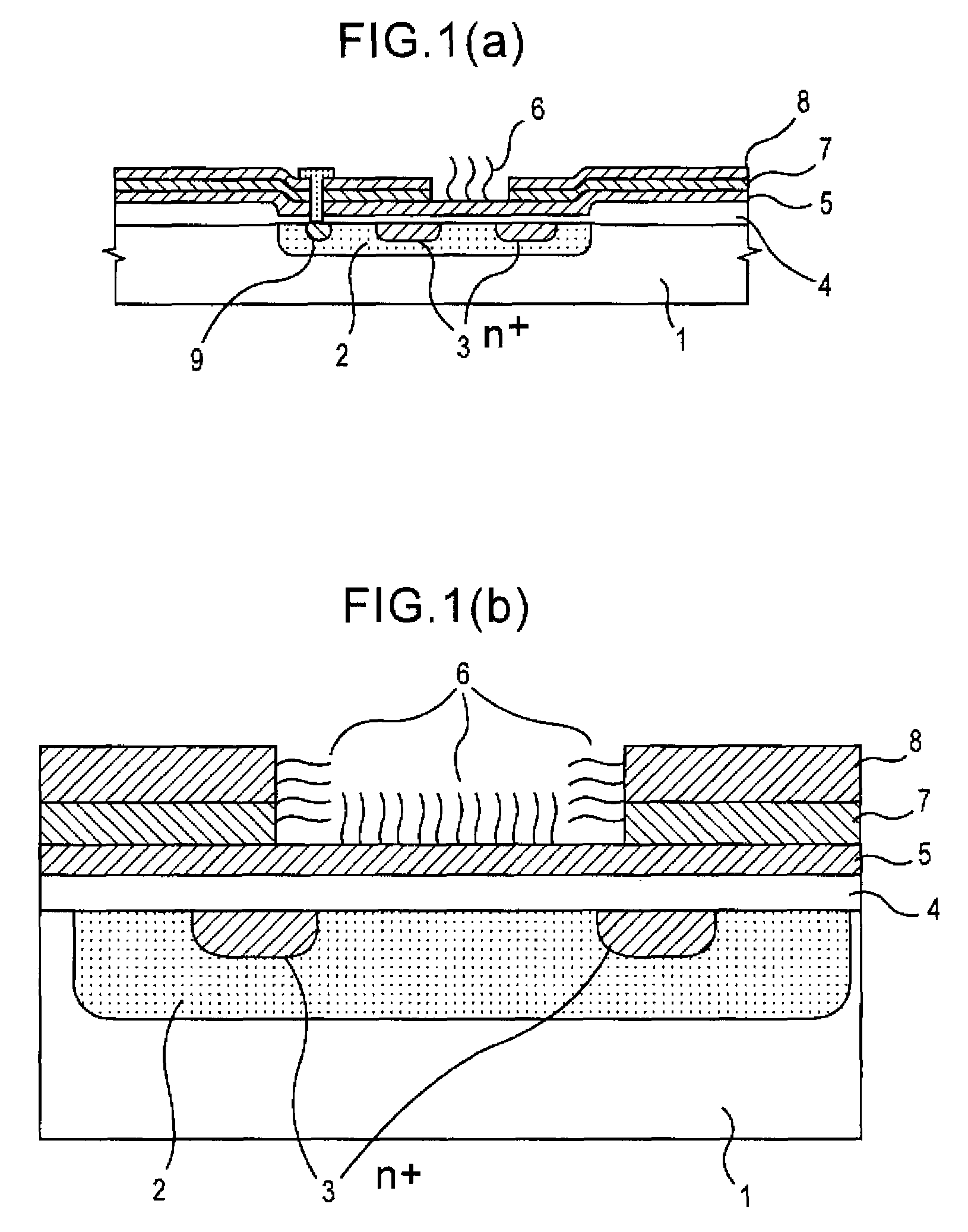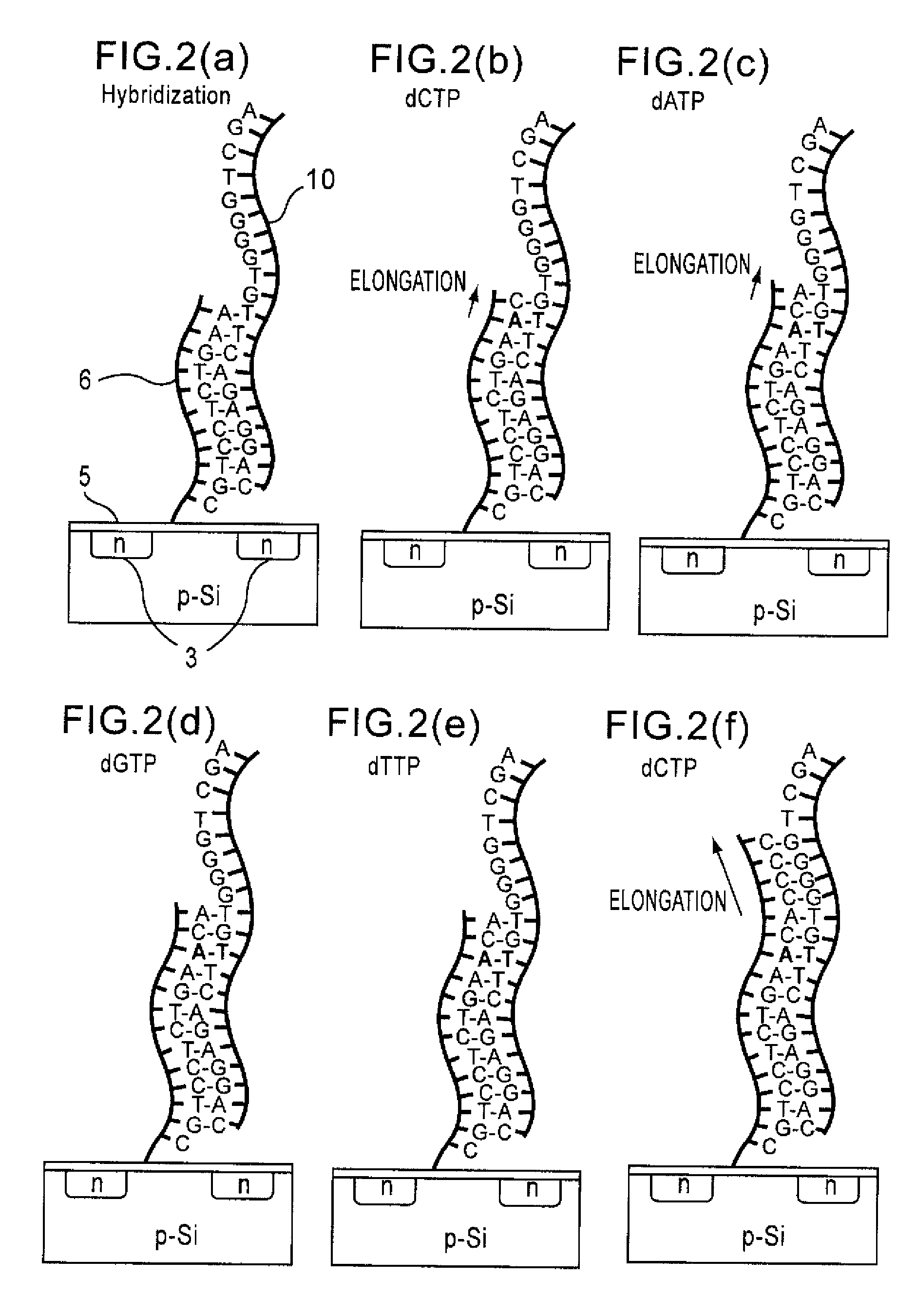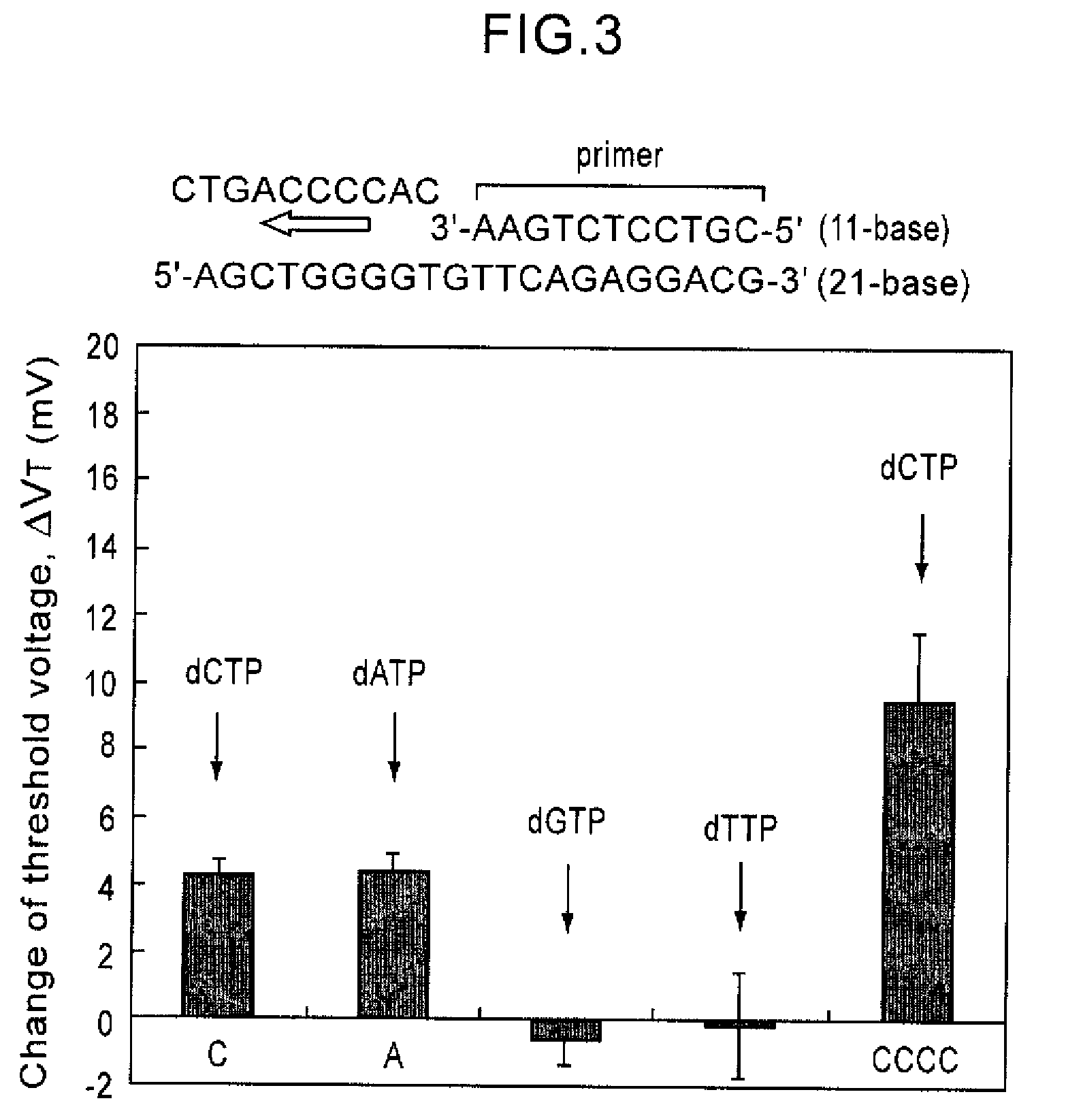Method of analyzing DNA sequence using field-effect device, and base sequence analyzer
a field-effect device and dna sequence technology, applied in the field of biotechnology, can solve the problems of large amount of base sequence data accumulating, large system cost, and low selectivity of reaction results
- Summary
- Abstract
- Description
- Claims
- Application Information
AI Technical Summary
Benefits of technology
Problems solved by technology
Method used
Image
Examples
example 1
[0059]The base sequence of the R353Q region of a blood coagulation factor, factor VII gene (SEQ ID NO: 8) was analyzed according to the process of the present invention. A nine-base long oligonucleotide probe was immobilized on the gate insulating film of the gene transistor. After hybridization with the target DNA, enzyme, Taq DNA polymerase and substrates, dATP, dGTP, dCTP, and dTTP were sequentially added, resulting in SEQ ID NO: 9. The observed threshold voltages of the gene transistor after addition of each substrate are shown in FIG. 7. FIG. 7 shows that the threshold voltage changes with addition of complementary bases, C, C, A, C, G, and T to the base sequence of the target DNA. FIG. 7 also shows that a threshold voltage change about three times greater in magnitude is observed by addition of G for the sequence having three cytosines in a row. In this manner, the base sequence of the R353Q region of the factor VII gene can be read.
examples 2 and 3
[0060]The base sequences of C282Y region (Example 2) (SEQ ID NO: 10) and H63D region (Example 3) (SEQ ID NO: 12) of a hereditary hemochromatosis gene were analyzed as in Example 1. The results are shown in FIGS. 8 and 9. In this example also, dATP, dGTP, dCTP, and dTTP were sequentially added, resulting in SEQ ID NO: 11 and SEQ ID NO: 12, respectively. Changes in threshold voltage were observed if the substrate was complementary to the base sequence of the target DNA. If not, no change in threshold voltage was observed. Moreover, when the same bases existed two in a row, a larger change in threshold voltage was observed compared with the case of only one base. Thus, the base sequence of the DNA can be analyzed without labeling according to the method of the present invention.
PUM
| Property | Measurement | Unit |
|---|---|---|
| distance | aaaaa | aaaaa |
| constant voltage | aaaaa | aaaaa |
| thickness | aaaaa | aaaaa |
Abstract
Description
Claims
Application Information
 Login to View More
Login to View More - R&D
- Intellectual Property
- Life Sciences
- Materials
- Tech Scout
- Unparalleled Data Quality
- Higher Quality Content
- 60% Fewer Hallucinations
Browse by: Latest US Patents, China's latest patents, Technical Efficacy Thesaurus, Application Domain, Technology Topic, Popular Technical Reports.
© 2025 PatSnap. All rights reserved.Legal|Privacy policy|Modern Slavery Act Transparency Statement|Sitemap|About US| Contact US: help@patsnap.com



